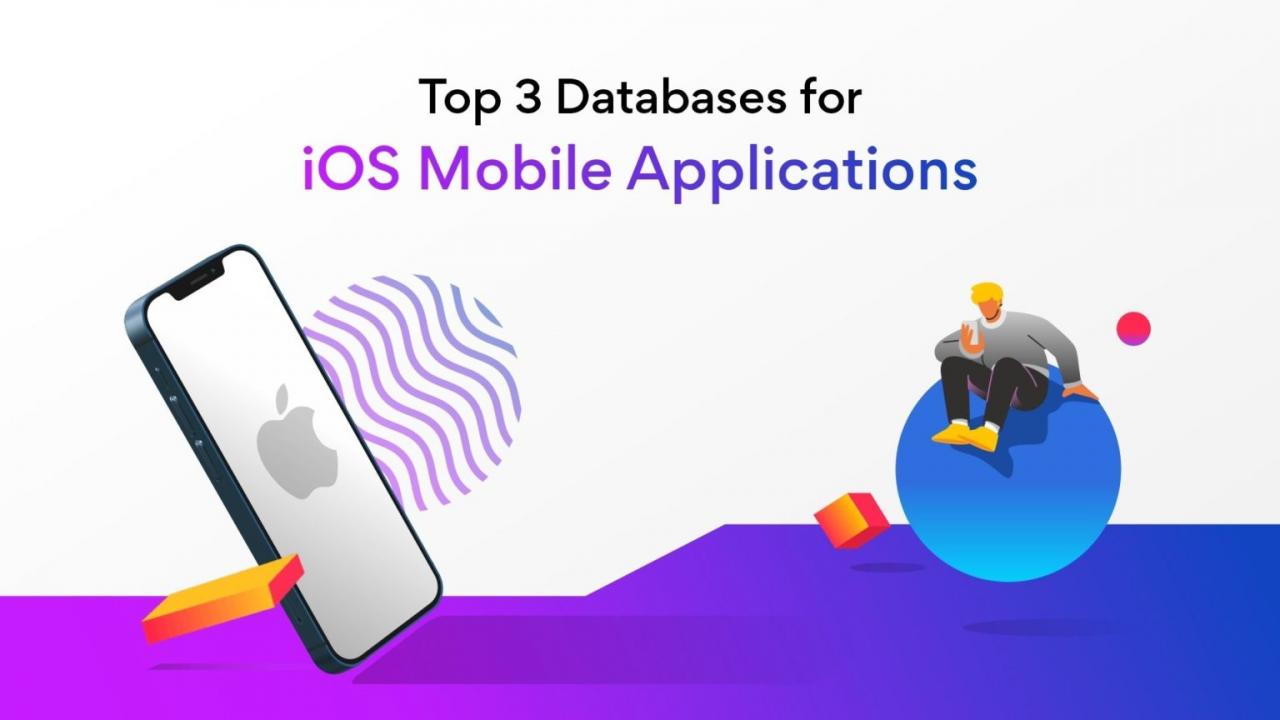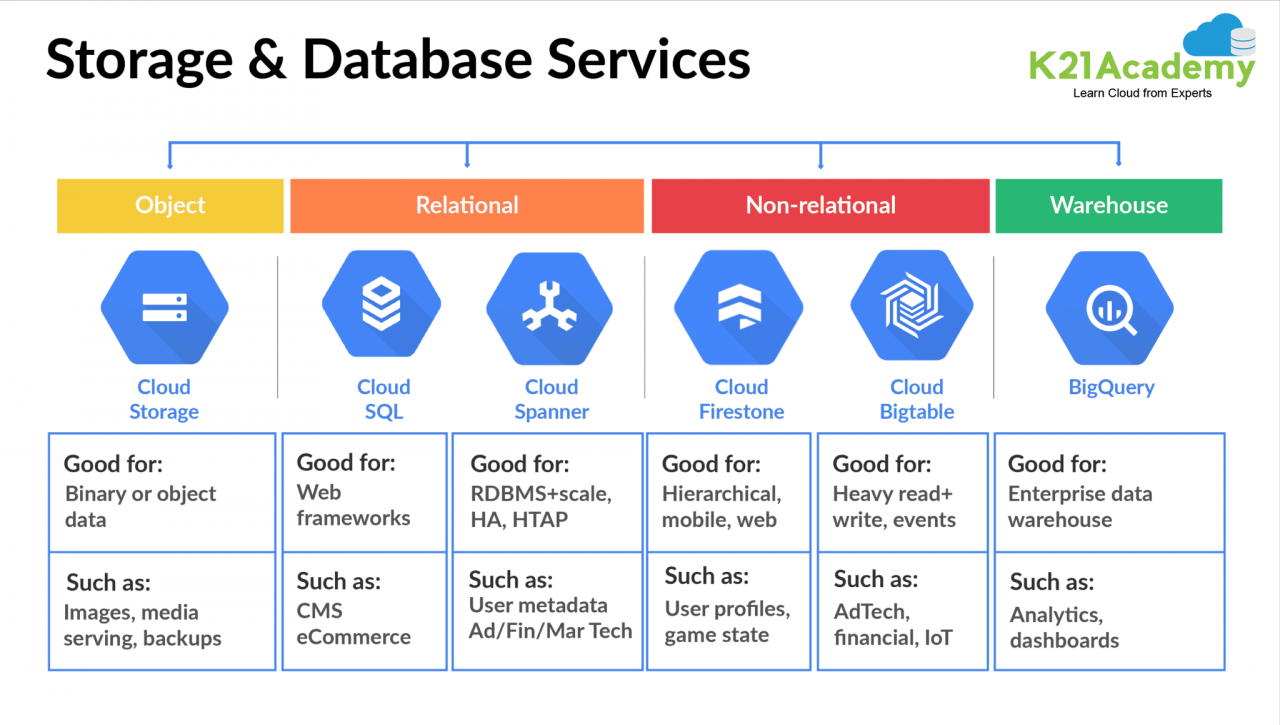An app consists of databases designed to store information – At the heart of every app lies a database, the unsung hero responsible for storing and organizing the information that makes your apps tick. From user profiles to game scores, databases are the backbone of modern app development, enabling us to interact with apps seamlessly and store our data securely.
In this comprehensive guide, we’ll delve into the world of app databases, exploring their role in data storage, organization, security, and performance. We’ll uncover the secrets of database design, optimization, and integration, empowering you to create apps that are both efficient and reliable.
Databases within an App
Databases play a pivotal role in mobile app development, serving as the backbone for storing, organizing, and managing vast amounts of data. They provide a structured and efficient way to store information, making it easily accessible and retrievable.
Types of Databases
There are several types of databases commonly used in app development, each with its unique strengths and characteristics:
- SQL Databases (Structured Query Language): These databases use a structured approach, organizing data into tables, rows, and columns. They offer robust data integrity and support complex queries, making them suitable for storing large and complex datasets.
- NoSQL Databases (Not Only SQL): These databases provide greater flexibility and scalability, allowing for the storage of unstructured or semi-structured data. They are often used for handling large volumes of data, such as user logs or social media posts.
- Key-Value Stores: These databases store data as key-value pairs, providing fast and efficient data retrieval based on the key. They are commonly used for storing small amounts of data, such as user preferences or session information.
Real-World Examples
Numerous popular apps rely on databases for data storage, including:
- E-commerce Apps: Apps like Amazon and eBay use databases to store product information, user accounts, and order history.
- Social Media Apps: Apps like Facebook and Instagram use databases to store user profiles, posts, and connections.
- Messaging Apps: Apps like WhatsApp and Telegram use databases to store messages, user contacts, and chat history.
Data Organization and Management
Proper data organization is essential for efficient app database management. It allows for quick and easy retrieval, update, and deletion of data, ensuring optimal performance and user experience.
To achieve efficient data organization, developers employ various techniques such as data normalization, indexing, and data validation.
Normalization, An app consists of databases designed to store information
- Divides data into smaller, related tables, eliminating redundancy and improving data integrity.
- Ensures data consistency and reduces storage space.
Indexing
- Creates an additional data structure that maps data values to their physical location, speeding up data retrieval.
- Indexes can be created on frequently queried columns, significantly reducing search time.
Data Validation
- Enforces data integrity by checking the validity and consistency of data entered into the database.
- Prevents invalid or incomplete data from being stored, ensuring data reliability.
Best practices for data organization and management in app development include:
- Defining a clear data model before creating the database.
- Using appropriate data types to optimize storage and performance.
- Implementing data constraints to ensure data integrity.
- Regularly backing up and maintaining the database.
Data Security and Integrity

The security and integrity of data stored in app databases are paramount. Robust measures have been implemented to safeguard sensitive information and prevent unauthorized access, data loss, or corruption.
Encryption mechanisms, such as AES-256, are employed to encrypt data both at rest and in transit, ensuring confidentiality and preventing unauthorized access. Access control mechanisms, including role-based access control (RBAC) and authentication protocols, limit access to authorized users and prevent unauthorized modifications or deletions.
An app consists of databases designed to store information, which is essential for its functionality. If you’re looking to promote your app, consider advertising for an app . This can help you reach a wider audience and get more people using your app.
Ultimately, an app’s success relies on its ability to store and manage information effectively.
Data Integrity
Data integrity is maintained through various mechanisms. Data validation ensures that only valid data is entered into the database, preventing errors and inconsistencies. Data backups are regularly performed to create redundant copies of the database, providing a fail-safe in case of data loss or corruption.
Transaction logs record all database operations, allowing for rollback in case of errors or accidental modifications. Data recovery procedures are in place to restore the database to a previous state in the event of data loss or corruption.
Industry Standards and Best Practices
The app adheres to industry standards and best practices for data security. These include:
- Encryption: AES-256 encryption for data at rest and in transit
- Access Control: RBAC and authentication protocols
- Data Validation: Ensuring valid data entry
- Data Backups: Regular backups for redundancy
- Transaction Logs: Recording database operations for rollback
- Data Recovery Procedures: Restoring the database in case of loss or corruption
Database Design Considerations: An App Consists Of Databases Designed To Store Information
Designing databases for an app requires careful consideration of several factors. These factors include scalability, performance, and data redundancy. Scalability refers to the ability of the database to handle increasing amounts of data and users without significant performance degradation. Performance refers to the speed and efficiency with which the database can process queries and retrieve data.
Data redundancy refers to the duplication of data across multiple tables or databases, which can lead to data inconsistencies and maintenance challenges.
An app consists of databases designed to store information, and one way to make that information more accessible is to add search to an asp net core mvc app . By adding a search bar, users can quickly and easily find the information they need, making your app more user-friendly and efficient.
An app consists of databases designed to store information, and adding search functionality can greatly enhance the user experience.
Database Design Patterns
To address these factors, various database design patterns have been developed. These patterns provide a structured approach to organizing and managing data, ensuring scalability, performance, and data integrity. Some common database design patterns include:
- Entity-Relationship (ER) Model:This pattern represents data as entities (objects) and their relationships. It is a conceptual model that helps visualize and understand the structure of the data.
- Normalization:This process involves breaking down data into smaller, more manageable tables to eliminate data redundancy and improve data integrity.
- Denormalization:This technique intentionally introduces some data redundancy to improve performance by reducing the number of joins required to retrieve data.
By carefully considering these factors and applying appropriate database design patterns, developers can create databases that are scalable, performant, and maintainable, ensuring the smooth operation and efficiency of the app.
An app is like a filing cabinet, only instead of paper, it stores information in databases. And just like you can add a new file to a filing cabinet, you can also add an app to your Hisense smart TV.
Adding an app to your Hisense smart TV is easy. Just follow these simple steps: add an app to my hisense smart tv . Once you’ve added the app, you can start using it to store your favorite shows, movies, music, and more.
So what are you waiting for? Add an app to your Hisense smart TV today!
Database Optimization Techniques

Optimizing database performance and reducing data retrieval time are crucial for enhancing user experience and ensuring efficient app functionality. Database optimization techniques aim to improve database efficiency by reducing query execution time, minimizing resource consumption, and maintaining data integrity.
Indexing
Indexing involves creating additional data structures that map specific data values to their corresponding record locations. By creating an index on a frequently queried column, the database can quickly locate records based on that column’s value, significantly reducing query execution time.
Apps consist of databases designed to store information. This information can be anything from user preferences to purchase history. Advertisers can target mobile apps based on the information they collect about users. This allows them to deliver highly targeted ads that are more likely to be clicked on and converted into sales.
Apps can also use this information to improve the user experience by providing personalized recommendations and content.
Caching
Caching involves storing frequently accessed data in a temporary memory location, such as the app’s RAM or a dedicated cache server. When a user requests data that is already cached, the app can retrieve it directly from the cache, bypassing the need to access the slower database.
An app consists of databases designed to store information, like user data and settings. To make your app stand out, you can add an icon to android app . This icon will be displayed on the home screen and in the app drawer, so it’s important to choose one that is visually appealing and represents your app well.
Once you’ve added an icon, your app will be more easily recognizable and users will be more likely to download and use it. An app consists of databases designed to store information, such as user data and settings.
This can dramatically improve data retrieval time for common queries.
Query Optimization
Query optimization involves analyzing and modifying SQL queries to improve their performance. This can include optimizing the query structure, using appropriate indexes, and avoiding unnecessary joins or complex subqueries. Query optimization tools can be used to identify and correct inefficient queries, leading to significant performance gains.
Examples of Optimization Techniques in Real-World Apps
*
-*Social Media Apps
An app is like a digital Swiss Army knife, it’s got a bunch of tools, like databases, to store all sorts of info. Want to add some extra flair to your LG Smart TV? Check out adding an app to an lg smart tv to spice things up.
Apps are basically just collections of databases that keep track of your stuff.
Social media apps heavily rely on database optimization techniques to handle massive volumes of user data and provide fast content retrieval. They use indexing on user profiles, posts, and comments to enable quick search and filtering.
An app is basically a collection of databases that stores information. Take AirDrop for example: it requires an app from the App Store to function properly. This is because AirDrop uses these databases to store information about the devices it’s connected to, the files it’s transferring, and other relevant data.
So, in essence, an app is a powerful tool that can store and manage a wide range of information.
-
-*E-commerce Apps
E-commerce apps optimize their databases to handle high traffic during peak shopping seasons. They use caching to store frequently accessed product information and indexing to enable efficient product searches and filtering.
-*Gaming Apps
Gaming apps often use spatial indexing to optimize the rendering of game environments and characters. By creating an index based on the spatial location of objects, the app can quickly retrieve and display relevant data, improving the gaming experience.
Data Access and Retrieval
Accessing and retrieving data from databases within an app is crucial for efficient and effective data management. Various methods are employed to accomplish this task, each with its advantages and implications.
Data access patterns, such as sequential, random, or indexed access, significantly impact database performance. Understanding these patterns and optimizing data retrieval strategies is essential for maximizing app responsiveness and user experience.
Programming Language-Specific Techniques
Programming languages provide specific techniques for data access and retrieval:
- SQL (Structured Query Language): A widely used language for accessing and manipulating data in relational databases, offering flexibility and powerful querying capabilities.
- NoSQL (Not Only SQL): A family of database technologies designed for handling large volumes of unstructured or semi-structured data, providing scalability and flexibility.
- Object-Relational Mapping (ORM): A technique that simplifies data access by mapping database tables and objects in the programming language, reducing the need for manual SQL queries.
Database Integration and Synchronization
Database integration and synchronization are crucial aspects of app development, ensuring seamless data flow and consistency across various components. Integrating databases with other app elements presents challenges, but also offers opportunities for enhanced functionality.
Integration Challenges and Techniques
- Data Disparity:Databases may use different schemas, data types, and formats, leading to integration issues.
- Data Integrity:Maintaining data integrity during integration is essential to prevent data loss or corruption.
- Concurrency Control:Managing concurrent access to data from multiple sources requires proper synchronization mechanisms.
Techniques for database integration include:
- Data Mapping:Translating data from one schema to another to facilitate integration.
- Object-Relational Mapping (ORM):Using software frameworks to simplify data mapping and object-database interactions.
- Data Integration Tools:Specialized tools designed to facilitate database integration, such as ETL (Extract, Transform, Load) tools.
Data Synchronization Methods
Data synchronization ensures data consistency across multiple databases or devices:
- Real-Time Synchronization:Data is updated in real-time, maintaining instant consistency.
- Periodic Synchronization:Data is synchronized at regular intervals, ensuring eventual consistency.
- Conflict Resolution:Mechanisms for resolving conflicts when multiple devices or databases update the same data.
Successful Integration and Synchronization Strategies
- Google Drive:Seamlessly synchronizes data across multiple devices, ensuring access to the latest version.
- Evernote:Provides real-time synchronization of notes, ensuring consistent data across all devices.
- Dropbox:Offers secure file synchronization and sharing, enabling collaboration and data access from anywhere.
Data Analytics and Reporting
Databases play a pivotal role in data analytics and reporting for apps. They store vast amounts of data that can be extracted, analyzed, and transformed into valuable insights. This information can then be used to improve app functionality, user experience, and overall business performance.
Techniques for Data Extraction and Analysis
Various techniques are employed to extract and analyze data from databases. These include:
- Data mining:Uncovering hidden patterns and relationships in large datasets.
- Statistical analysis:Summarizing and interpreting data using statistical methods.
- Machine learning:Developing algorithms to analyze data and make predictions.
Applications of Data Analytics and Reporting
Data analytics and reporting are crucial for enhancing app functionality and user experience:
- User behavior analysis:Understanding user preferences, usage patterns, and pain points.
- App performance optimization:Identifying bottlenecks and areas for improvement.
- Personalized experiences:Tailoring app features and content based on individual user profiles.
- Targeted marketing campaigns:Identifying potential customers and creating targeted marketing campaigns.
Database Maintenance and Administration
Maintaining and administering databases is crucial for ensuring their health, performance, and longevity. It involves tasks such as regular backups, software updates, and performance monitoring to identify and resolve any issues promptly.
Regular Backups
- Backups create copies of the database, safeguarding data in case of hardware failures, software errors, or accidental deletions.
- Establish a regular backup schedule based on the criticality of the data and the frequency of changes.
- Consider using automated backup tools to ensure backups are performed consistently and reliably.
Software Updates
- Database software updates often include security patches, performance improvements, and new features.
- Install updates promptly to enhance security, optimize performance, and access the latest functionalities.
- Test updates thoroughly in a non-production environment before deploying them in the live system.
Performance Monitoring
- Monitor database performance metrics such as query execution time, resource utilization, and connection count.
- Use tools like database dashboards or monitoring software to track performance and identify potential bottlenecks.
- Analyze performance data to optimize queries, adjust indexes, or upgrade hardware as needed.
Final Review

As we reach the end of our journey into the realm of app databases, it’s clear that these unsung heroes play a pivotal role in the success of any app. By understanding the concepts of data organization, security, and optimization, we can create apps that not only meet the needs of our users but also stand the test of time.
So, let’s embrace the power of databases and continue to push the boundaries of app development, creating innovative and user-friendly experiences that make a lasting impact.
Essential Questionnaire
What are the different types of databases used in app development?
There are various types of databases used in app development, including relational databases (e.g., MySQL, PostgreSQL), NoSQL databases (e.g., MongoDB, Cassandra), and key-value stores (e.g., Redis, Memcached).
How do I ensure the security of data stored in app databases?
Implementing robust security measures is crucial to protect data stored in app databases. This includes encryption, access control, regular backups, and vulnerability assessments.
What techniques can I use to optimize the performance of app databases?
Database optimization techniques include indexing, caching, query optimization, and hardware optimization. By implementing these techniques, you can improve data retrieval speed and reduce latency.